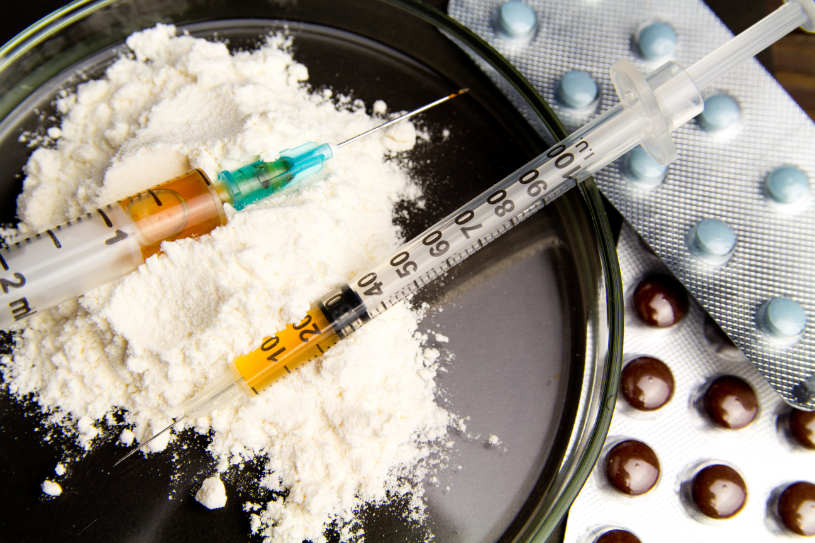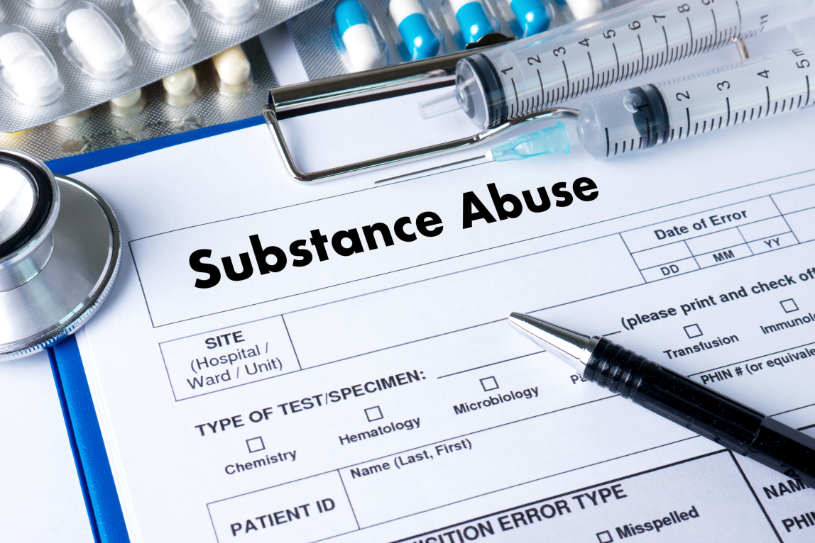Narcotic comes from the Greek word “narkōtikón” which means stupor. Generally, these are extremely effective pain-relieving drugs and the term is often used to describe all addictive substances. However, definition-wise, narcotics are substances sourced from a poppy plant (Papaver somniferum) that are produced naturally or synthetically/semi-synthetically.
Table Of Contents:
With regards to narcotics vs opioids, it is important to understand that both are used for the treatment and management of pain. But since the term narcotic is usually mistaken with illegal drugs, the United States Drug Enforcement Administration decided to use opioids instead. In 2019, it was reported that around 35 million people globally are suffering from narcotics abuse. Because of these statistics, it is essential to understand the dangers of using a narcotic substance to avoid dangers to the health.
In this article, information about narcotics meaning, types of narcotics, narcotic drug schedules, short and long-term effects of these substances, narcotic drug overdose, half-life, and withdrawal, and how to treat narcotics addiction will be provided.
More About Narcotics:
What Are Narcotics?
With regards to narcotics meaning, according to the United States Drug Enforcement Administration, narcotic drugs bind to pain receptors in the brain and block pain signals. These substances include synthetic and semi-synthetic opioids and opium. These substances are also referred to as opiate substances that reduce a person’s sensitivity to pain and produce feelings of intense euphoria. This is the primary reason why people abuse these drugs. They are so-called downers that depress the central nervous system, produce a sense of calm, and induce sleep. These substances are highly addictive that is why taking them without medical supervision can lead to tolerance, and later, to drug addiction.
Types of Narcotics: What Are Prescription Narcotic Drugs and Illegal Narcotics?
There are two types of narcotics: prescription and illegal. Prescription narcotic drugs are given by doctors in a controlled hospital setting to minimize the chance of narcotics abuse. These types of narcotics are administered by mouth, through intravenous lines, or in the form of suppositories or transdermal patches. Common narcotic drugs from the opioid class, such as oxycodone and codeine, are available legally by prescription. All opioids and opiates affect the human body in essentially the same way, although each has specific effects depending on the ingredients and additives.
The List of Narcotics That Are Legal Include:
Generally, these drugs are prescription substances but illegal ones can be purchased from street dealers and these substances are snorted, smoked, or injected by a drug addict.
The List of Narcotics That Are Illegal Include:
Take note that every individual has a different body chemistry and brain environment. Thus, nobody can predict the short and long-term effects of narcotic drugs on a person. Abusing these pain medications can lead to serious health problems, and in some cases, even death. Many people do not realize that legally available prescription medications can be as dangerous as street drugs.

Drug Schedules: Law And Narcotic Drugs Use
The drug schedule for a narcotic or opioid drug depends on the medical use, safety, drug abuse potential, and drug dependence profile of the substance. There are different drug schedules for every opioid or narcotic medication. Take a look at the information about the list of narcotics based on drug schedule:
Some Of The Schedule I Narcotics
- Heroin
- Peyote
Schedule II Narcotics
- Hydromorphone
- Methadone
- Meperidine
- Oxycodone
- Fentanyl
- Morphine
- Opium
- Codeine
- Hydrocodone
Schedule III Narcotics
- Tylenol with Codeine
- Buprenorphine
- Benzphetamine
- Phendimetrazine
- Ketamine
- Anabolic steroids
Schedule V Controlled Substances
- Robitussin AC
- Phenergan with Codeine
- Ezogabine
Take note that the higher the schedule number, the lower the narcotics abuse potential. For example, drugs in schedule II narcotics have a higher abuse potential compared to drugs in schedule III narcotics. Additionally, as observed, there are no schedule IV narcotics. Usually, the schedule IV drugs include benzodiazepines and anxiolytics.
Short- And Long-Term Use Effects Of Narcotics
How do narcotic drugs affect the health of the body? Narcotics effects may appear after binding to certain opiate receptors on the brain, spinal cord, and gut opiate receptors in the brain. These medications can relieve pain and cause feelings of well-being, but some narcotics side effects after their use still may appear. These drugs cause an initial feeling of pleasure and euphoria, which makes a person desire to continue experiencing those feelings and may lead to addiction development.
Several physical and mental opioid side effects may appear after using them for the treatment of different medical conditions. These narcotics side effects may be very dangerous to the health, especially when they are used recreationally in excess doses. For instance, snorting these drugs may cause respiratory depression and cardiac arrest. Using these medications at lower doses makes a person feel sleepy, but higher doses can slow breathing and heart rate, which can lead to death.
Short-Term Narcotics Effects
Short-term narcotics effects may appear immediately after substance administration and may last for a few days. The short-term side effects of narcotics can severely affect the quality of life, and sometimes they may lead to discontinuation of drugs even though a patient is still having a medical health problem. Different types of drugs may affect patients differently and may produce different narcotics effects. For example, the side effects of narcotics such as dizziness, nausea, and vomiting are more often associated with Oxycodone than Morphine.
There Are Some Common Physical Side Effects of Narcotics on the Body That May Persist for a Short Period, Such As:
- Drowsiness
- Slow breathing
- Constipation
- Unconsciousness
- Nausea
- Intestinal bloating
- Vomiting
- Itching
- Low blood pressure
- Delayed gastric emptying
- Hyperalgesia
- Hyperalgesia
- Muscle rigidity
- Immunologic and hormonal dysfunction
The medical provider may advise the use of non-opioid medications or natural alternatives to avoid these narcotics effects.
Long-Term Narcotics Effects
What do narcotics do to the central nervous system when they are used for a long time? There are several narcotics side effects on the brain, such as psychological drug addiction and dependence. Moreover, the side effects of narcotics may be fatal.
Here Are Common Long-Term Physical and Psychological Narcotics Side Effects:
- Suppression of the immune system
- Irritable bowel syndrome
- Sleep disturbance
- Psychological dependence
- Addiction development
According to the National Institutes of Health, there is a relationship between chronic use of narcotic medications and blood pressure. The prolonged use of these drugs can lead to bradycardia and vasodilation, and as a result, can cause hypotension. The risk of tolerance development is also present. There were cases when long-term use of these medicines increased sensitivity to pain, which is often hard to distinguish from tolerance.
How can narcotic medications cause death? These drugs affect the part of the brain that regulates breathing. Overdose may be accompanied by the stopping or slowing of breathing, which could end with coma and death.
Narcotics Addiction and Abuse Overview
There has been a national and international opioid crisis due to narcotics drug abuse based on the Harrison Narcotic Act. Also, in the Harrison Narcotic Act, it was stated that drug addict formation is getting worse. According to the United Nations Office on Drugs and Crime, in the year 2008, 5.7% of the population globally have used illicit drugs including narcotics. Most of these abusers have HIV and the most used route of administration is via injection. In the same report, it was stated that the cause of drug abuse and addiction might be due to the freedom of opium cultivation, most especially in Myanmar and Afghanistan.
Why Are Narcotic Drugs Addictive?
Narcotic drugs are addictive because their chemical structures have addictive properties. As these drugs inhibit neurotransmitter release, brain changes occur that lead to tolerance, dependence, and addiction. Additionally, many factors contribute to this narcotic drug abuse and addiction such as neglect and poor parent-child attachment. According to a study of physicians from Austria, these factors alter the brain, causing complex neurobiological derangement and dopamine system dysfunctions.
Signs Of Narcotic Addiction
The signs of narcotic addiction can be physical and psychological. However, it is hard to identify a drug addict especially when the people around them do not have any idea what these signs are. In this section, information about the physical and mental signs and symptoms of narcotic addiction will be provided.
Physical Signs of Narcotic Addiction:
- Inadequate hygiene and lack of desire to care to self
- Decreased libido
- Changes in exercise habits
- Frequent flu-like symptoms
- Weight loss
Psychological Signs of Narcotic Addiction:
- Having uncontrollable cravings and dietary habit changes
- Isolation from family and friends
- Changing friends, hiding new friends
- Personal relationships and sexual life problems
- Mood swinging
- Sleeping at unreasonable times
- Having problems at school, university, or work
- Having financial difficulties and asking for money frequently
- Drowsiness
- Getting in trouble with the law
Noticing a few of these signs may not always mean the presence of an addiction to narcotic substances, but this may be a signal to have a conversation with a person and to consult a medical specialist, and enroll in rehab services.

Who Is Most At Risk Of Narcotics Addiction?
According to the National Institute on Drug Abuse, aside from those who are neglected at a young age, the teens are most at risk of narcotics addiction and they are the ones who need urgent help. Additionally, the drugs being used by this age group include oxycodone and hydrocodone. Report on Progress Toward Security and Stability in Afghanistan claims that females of this age group are more at risk of narcotics addiction compared to males.
Overdose From Narcotic Drugs
Narcotic drug or opioid overdose occurs when someone has excessive unopposed stimulation of the opiate pathway. Overdose of these drugs is the leading cause of accidental deaths in the U.S. Overdoses most often occur when these drugs are used for recreational purposes, taken in high doses, or mixed with other illegal substances or alcohol.
The Signs of Overdose Include:
- The face is extremely pale
- Drowsiness
- Loss of consciousness
- A person feels clammy to the touch
- The body goes limp
- Pinpoint pupils
- The fingernails or lips have a purple or blue color
- Vomiting or making gurgling noises
- Hypotension
- Slow breathing
- Slow heartbeat
Can narcotic medications cause seizures? The use of these drugs in high doses may lead to brain overactivity, which can influence brain cells to send abnormal signals. Seizures can occur when the electrical system of the brain breaks down. Seizures are also a sign of overdose. It is necessary to call or contact 911 immediately and seek care or help if any signs are noticed.
How Long Do Narcotics Stay In The System?
Narcotic drugs react similarly to the body’s receptors; however, the duration of their stay in the system can vary. According to research by a doctor from New York, depending on opioid half-life and individual factors such as age, rate of metabolism, and body mass, these drugs can remain in the system for as long as three days. Additionally, there are long-acting and short-acting narcotics.
Some of the Long-Acting Ones Include:
- Fentanyl
- Methadone
- Morphine
In compliance with a research by a scientist from Washington, long-acting opioids can remain as long as four days, depending on the dose and the frequency of use.
Furthermore, There Are Also Short-Acting Narcotic Medications Such as the Following:
- Codeine
- Hydrocodone
- Oxycodone
- Oxymorphone
- Morphine
According to a clinical review by doctors from Salt Lake City, short-acting opioids may stay in the system for up to 10 hours. Since narcotic drugs’ half-life varies, only a medical doctor can decide about the best substance to be given to a patient, depending on his or her current condition.

Narcotic Drugs On The Drug Test
The detection of narcotics via a drug test depends on how much time has passed since taking the drug, the amount of substance, frequency of use, individual metabolism, and other factors. According to the research of physicians from Boston, prescription narcotic drugs like oxycodone, hydrocodone, codeine, morphine, can be detected within 33-54 hours of use, and schedule I narcotics like heroin can be detected within 15-44 hours after consumption.
Urine Test
It is difficult to determine how long narcotic drugs stay in the urine due to individual factors that play a major role. However, they should remain in the urine between 1 to 4 days. Well-hydrated patients have higher chances of excreting toxins a lot faster than less hydrated individuals. Narcotic drugs like heroin, morphine remain in the urine for 1-2 days, while methadone remains in the urine for 2-3 days.
Blood Test
Just like urine, it is difficult to specify how long narcotic medications will stay in the blood due to individual differences. Generally, they should remain in the blood for between 6 to 72 hours. During this period, they can be easily detected by a blood test. For narcotic drugs like methadone, this drug can be detected in the blood after 30 minutes of use and remains in the blood for 2-3 days. Fentanyl, on the other hand, remains in the blood for around 12 hours.
Hair Test
Narcotic drugs remain in the hair follicle for as long as 90 days. During this period, doctors can easily detect traces of them in the hair. To successfully carry out the test, a patient’s hair must be at least 0.5 to 1.5 inches. A person with shorter hair will need to supply more hair for the sample. Unlike saliva, blood, and urine tests, a hair drug test detects regular and long-term drug use. Fentanyl and methadone can remain in the hair for more than 90 days.
Saliva Test
According to doctors from Baltimore, narcotic drugs such as codeine, morphine, and heroin can stay in the saliva for up to 36 hours. Although this drug testing is less used, it is more convenient compared to the others. Additionally, in the same research, it was reported that the parent drug or the original drug compound can also be detected in the saliva within 24 hours.
Narcotic Drugs Withdrawal Symptoms And Detox
Opioid withdrawal is also possible when one consumes narcotic drugs. Eventually, narcotic drugs withdrawal symptoms may occur when the drug is taken away after long use. These symptoms of drug withdrawal can occur with the use of both illegal and prescribed narcotics. They may vary widely depending on individual biological differences and factors related to the medication itself. It is often necessary to contact medical support for narcotic drugs detox when people develop a physical or psychological dependence on these medications.
Symptoms And Signs of Withdrawal From Narcotics
Withdrawal symptoms can appear in a drug addict just hours after the final dose and may last for a week or more. Some symptoms of narcotics drug withdrawal may be life-threatening. That’s why medications for drug withdrawal are often used to make the process safer and easier. This should be done under the supervision of a qualified specialist, who would choose the suitable medications and define the effective dose. When people are weaning off these medications, the duration of symptoms may vary depending on how long narcotic substances stay in the system.
The Early Symptoms of Withdrawal May Include:
- Muscle aches and pains that vary in severity
- Sweats
- Insomnia and other sleep disturbances
- Agitation
- Hypertension or high blood pressure
- Anxiety
- Running nose or eyes
- Fast heartbeat
- Yawning
- Fever
Physicians from Kentucky state that these symptoms usually appear within 6-12 hours for short-acting narcotic substances such as heroin and within 30 hours for long-acting ones like methadone. Late drug withdrawal symptoms usually appear within 72 hours and often last up to a week or more. They are not usually life-threatening but may be very uncomfortable. They include:
- Severe drug cravings
- Depression
- Stomach cramps and nausea
- Vomiting
- Diarrhea
- Goosebumps
These are the physical symptoms of narcotic withdrawal, and they usually fade after a week. The narcotic substance withdrawal scale for the severity of symptoms may help to define how much intervention is needed during this time. However, psychological symptoms and cravings can last for a long time. That’s why patients need to contact and enroll in services, therapy, mental support, and opioid drug addiction treatment from an expert on the subject of how to detox from narcotics.
Narcotics Addiction Treatment And Rehabilitation
Many different substances are abused by a drug addict who has succumbed to drug addiction. Narcotic drugs are some of the most commonly abused drugs due to their highly addictive nature. In most cases, opiate drug addiction requires enrolling in services such as residential addiction treatment or inpatient rehab. The first step is detoxification under strict medical supervision. During this stage of narcotics abuse treatment, the recovering addict is given help through supplemental medications, such as Suboxone, Methadone, and Revia, to relieve unpleasant and potentially life-threatening withdrawal symptoms. Healthcare providers reduce the dose of narcotic drugs in the system gradually to make the process easier. Addicts are monitored for symptoms such as restlessness, drowsiness, anxiety, confusion, sweating, loss of appetite, and nausea.
Frequently Asked Questions
Are Muscle Relaxers Narcotics?
There are many muscle relaxers available in the global market today and these muscle relaxers like methocarbamol and cyclobenzaprine are not considered narcotic drugs or opioids.
Why Might a Medical Professional Prescribe Narcotics to a Patient?
In case of severe pain where OTC or prescription pain relievers are no longer working, narcotic substances can be prescribed. Usually, these are given in a hospital setting to avoid misuse. Also, narcotic substances are commonly prescribed after a serious injury or major surgery.
Are Opioids Narcotics?
Opioids are a subclass of narcotics. This means that opioids are also considered narcotics. Before, opioids were referred to as narcotics, but the former is always mistaken as illicit drugs. Thus, the DEA opted to use opioids instead.
What Is Narcotics Anonymous?
Narcotics Anonymous is a therapeutic part of rehab treatment. It is a support group for patients with a desire to stop their addiction to drugs and other substances. When one is enrolled in this program, abstinence is being encouraged from the use of all drugs and substances such as alcohol.
Hope Without Commitment
Find the best treatment options. Call our free and confidential helpline
Most private insurances accepted
Related Topics
Page Sources
- Cone, E. J., Dickerson, S., Paul, B. D., & Mitchell, J. M. (1993). Forensic drug testing for opiates. V. Urine testing for heroin, morphine, and codeine with commercial opiate immunoassays. Journal of analytical toxicology, 17(3), 156-164.
- Dams, R., Choo, R. E., Lambert, W. E., Jones, H., & Huestis, M. A. (2007). Oral fluid as an alternative matrix to monitor opiate and cocaine use in substance-abuse treatment patients. Drug and alcohol dependence, 87(2-3), 258-267.
- Fine, P. G., Mahajan, G., & McPherson, M. L. (2009). Long-acting opioids and short-acting opioids: appropriate use in chronic pain management. Pain medicine, 10(suppl_2), S79-S88.
- Gerra, G., Leonardi, C., Cortese, E., Zaimovic, A., Dell’Agnello, G., Manfredini, M., ... & Donnini, C. (2009). Childhood neglect and parental care perception in cocaine addicts: relation with psychiatric symptoms and biological correlates. Neuroscience & Biobehavioral Reviews, 33(4), 601-610.
- Grissinger, M. (2011). Keeping patients safe from methadone overdoses. Pharmacy and Therapeutics, 36(8), 462.
- Hadland, S. E., & Levy, S. (2016). Objective testing–urine and other drug tests. Child and adolescent psychiatric clinics of North America, 25(3), 549.
- Kharasch, E. D. (2015). Opioid half-lives and hemlines: the long and short of fashion. Anesthesiology, 122(5), 969-970.
- Levy, S., Siqueira, L. M., Committee on Substance Abuse, Levy, S., Ammerman, S. D., Gonzalez, P. K., ... & Smith, V. C. (2014). Testing for drugs of abuse in children and adolescents. Pediatrics, 133(6), e1798-e1807.
- McQuay, H. J., Jadad, A. R., Carroll, D., Faura, C., Glynn, C. J., Moore, R. A., & Liu, Y. (1992). Opioid sensitivity of chronic pain: a patient‐controlled analgesia method. Anaesthesia, 47(9), 757-767.
- Miser, A. W., Chayt, K. J., Sandlund, J. T., Cohen, P. S., Dothage, J. A., & Miser, J. S. (1986). Narcotic withdrawal syndrome in young adults after the therapeutic use of opiates. American journal of diseases of children, 140(6), 603-604.
- Smith, H. S. (2012). Rapid onset opioids in palliative medicine. Annals of palliative medicine, 1(1), 45-52.
- Staats, P., Gharibo, C., & Thakur, A. (2017). American Society of Addiction Medicine’s Drug Testing Guidelines: Clinical Congratulations, Questions and Concerns. ASA Monitor, 81(9), 16-19.



